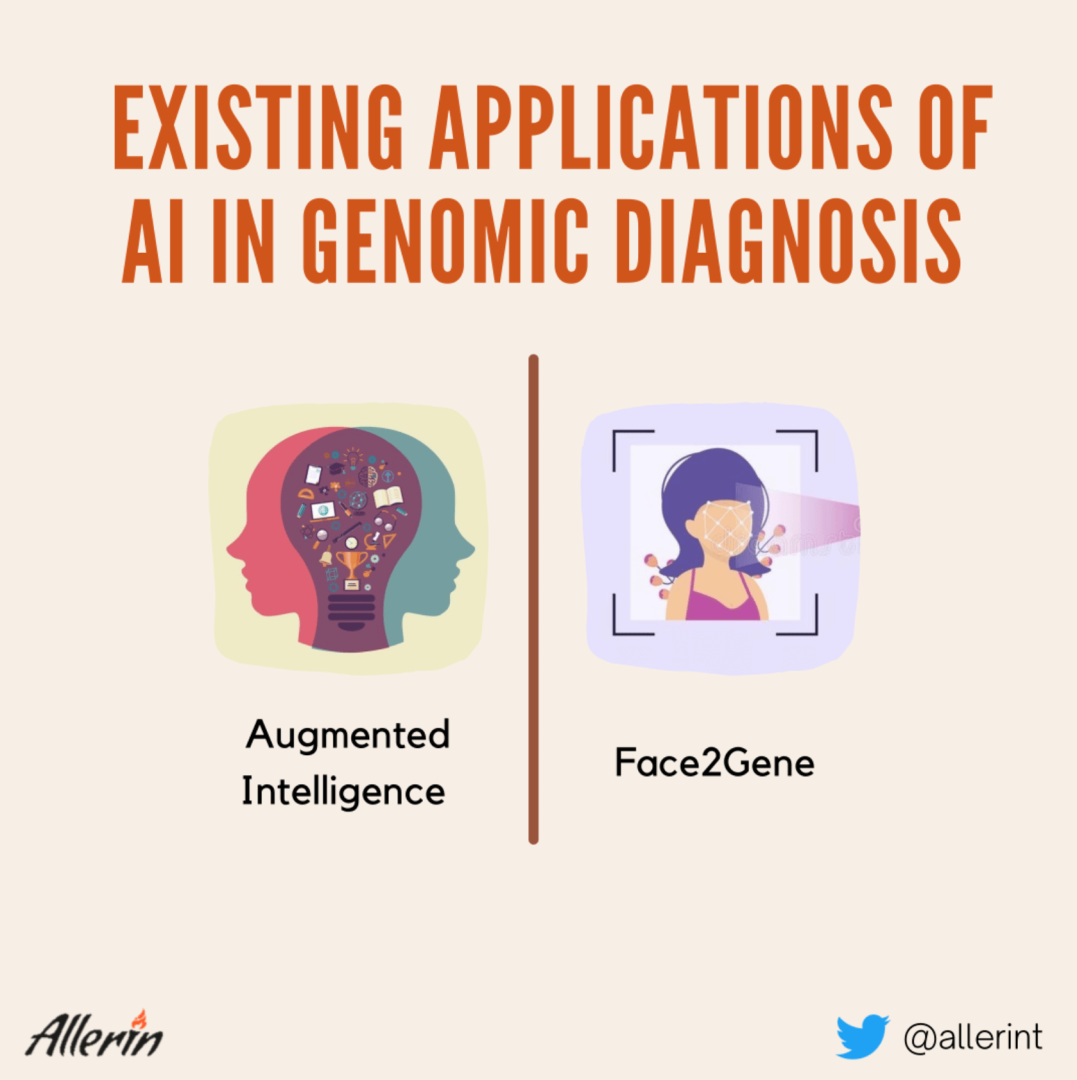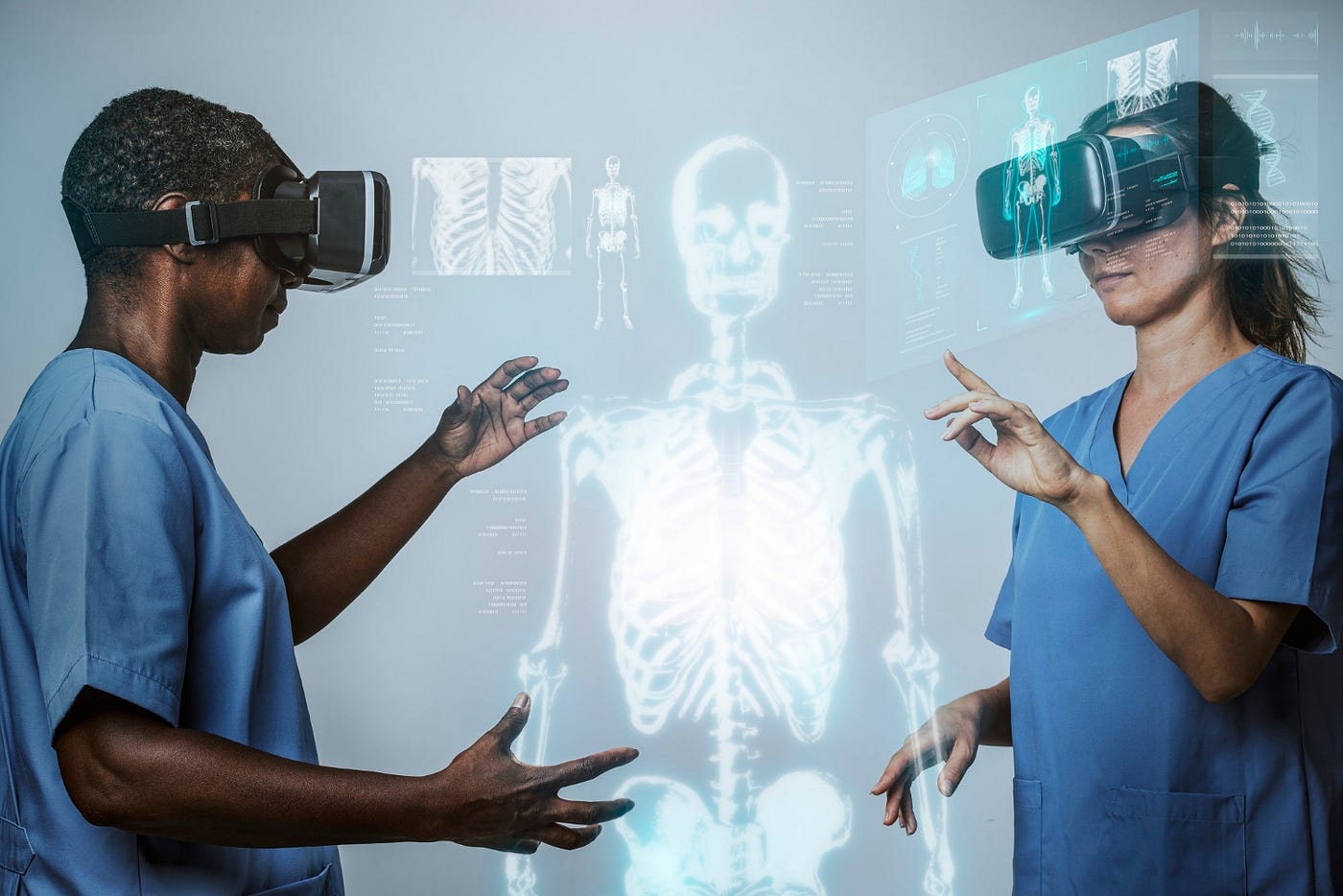
The Role of Artificial Intelligence in Genomic Medicine
Artificial intelligence (AI) is revolutionizing genomic medicine by providing better health outcomes.
Genomic diagnostic is an area that can benefit hugely from the capabilities of AI. The involvement of AI in healthcare can potentially be beneficial in genetic diagnostics.
What is Genomic Medicine?

Genomic medicine is an emerging medical discipline that involves using genomic information about an individual as part of their clinical care (e.g. for diagnostic or therapeutic decision-making) and the health outcomes and policy implications of that clinical use.
Benefits Of Artificial Intelligence In Genomic Diagnostics
Rare diseases are fairly common in the world, with nearly half a billion people suffering from some or the other kind of lesser-known ailments. Such diseases can be notoriously tricky to diagnose as standard clinical tests may not uncover several underlying details regarding them. Additionally, almost all rare diseases are caused due to genetic issues in individuals. So, fast and accurate gene-based ailment diagnostics is the need of the hour in healthcare today. However, according to a study, such diseases can take nearly five years on average to be diagnosed accurately, meaning that almost a third of the children suffering from one or the other type of rare genetic disorder will pass away before they even turn five.
The Existing AI Applications in Genomic Diagnostics
Despite a few issues, the use of AI in healthcare has mostly had a positive impact on both the field and the technology. AI’s ability to scan through gigantic sets of data and provide clarity for decision-making through its unrivaled pattern and anomaly recognition capabilities makes the technology ideal for a sphere as diverse and complicated as healthcare.
The use of AI for diagnosing illnesses caused by genetic irregularities is still evolving. Many organizations and healthcare bodies have developed applications that use AI for detecting genetic diseases. Generally, the common goal of each of these applications is the same—reducing the time taken to conduct genome-based diagnoses on patients and also eliminating the human error associated with the process. Understanding these applications will let us know how AI will continue to develop in this field moving forward.
Here are some of the known applications of AI in genomic diagnostics:

Augmented Intelligence
Machine learning is a highly resourceful tool for sensing irregularities in the genetic structure of an individual. As a result, many applications used for gene-based diagnostics employ the AI component for extracting the most accurate results. For instance, healthcare experts and researchers at the Rady Children's Institute for Genomic Medicine (RCIGM) have developed a machine learning-based process that also uses Natural Language Processing (NLP) to detect genetic diseases quickly and accurately. This process is used to monitor the genomic sequencing in infants to know whether recently born children have any rare genetic disorders.
The process, referred to as "augmented intelligence" by Stephen Kingsmore, the CEO and president of RCIGM, was researched and developed by the institute in collaboration with renowned technology-based companies such as Illumina, Fabric Genomics, Clinithink, Diploid, and Alexion.
Rapid genomic sequencing is the core specialty of the process, with the institute achieving a Guinness World Record of performing high-speed genomic diagnostics of a test subject within an average of 19 hours using the augmented intelligence process in February 2018. The achievement was announced in widely attended press conferences in San Francisco and Orlando. The process, formally known as rapid Whole Genome Sequencing (rWGS), is optimized to cut down on the time taken to detect genetic anomalies using the blood sample of test subjects.
Despite the diagnostic speed being boosted, the accuracy of a genomic diagnosis is not compromised, and the process consistently exhibits up to 99% precision in the genome sequencing, phenotyping, and interpretation of genetic data in the blood samples of test subjects. Such incredibly high levels of speed and accuracy in the diagnostics process are highly valuable for the future of AI in healthcare and to provide timely, precise medical care in high-pressure intensive care unit operations. Genetic diseases are some of the leading causes of death in infants everywhere. As stated at the beginning, delays in the diagnosis of such diseases can account for many avoidable deaths amongst children. With the assistance of rWGS and other similar tools and machine learning-based technologies, the genomic data interpretation and gene sequencing processes can be shortened. Additionally, as AI and other technologies become more accessible to the masses, gene-based diagnostics using such systems can be made more affordable for everybody.
Computer Vision-Based Diagnosis
Face2Gene is a smartphone app that uses deep-learning algorithms and computer vision to detect rare genetic disorders such as the Cornelia de Lange syndrome. The application, developed by Boston-based digital health company FDNA, can provide fast and accurate genomic diagnostics by scanning the faces of individuals and recording peculiarities in their facial phenotypes.
The application works on the basis that several congenital disorders can be detected quickly in individuals just by viewing their facial features. AI's pattern recognition abilities are used in this application to diagnose rare genetic diseases. One of the drawbacks of the application is that it does not intend to provide definitive diagnostics for patients, meaning that confirmatory diagnoses from professionals will be required after getting a report on the app.
FDNA's researchers have trained the AI algorithm used for Face2Gene's diagnostic processes using more than 17,000 historical images of diagnosed patients suffering from 216 rare and distinctive genetic syndromes. With such a wide range of training datasets, the application generally provides up to high levels of accuracy in its diagnostics about 90% of the time.
An example of the application's prowess in identifying genomic issues is its diagnosing of a rare and sometimes-difficult-to-detect genetic disorder known as the Wiedemann-Steiner Syndrome by closely scanning the facial features of children. Face2Gene effectively helps individuals save a lot of money by enabling patients and their families to avoid expensive and time-consuming genomic diagnostics. The app uses a trial-and-error method to narrow down the list of ailment possibilities in patients. Once a face is scanned, the list of ailments is displayed on a screen, with the most obvious result usually on top. Using this data, patients and healthcare workers can seek a second, possibly more knowledgeable opinion and diagnosis to confirm the results of the application.
Healthcare professionals using the application can also upload patients’ pictures online to widen the database of the application. In this way, the disease-detecting capabilities of the tool will keep getting better with time, and eventually, it will be able to detect all the genetic disorders based on facial irregularities. As is the case with any of the other AI-based healthcare applications, the main drawback of Face2Gene is bias in genomic diagnoses due to a lack of adequate diversity in its database. As a result, the frequency with which the application can detect genetic disorders in Caucasian faces is much greater than how correctly and often it can diagnose the same disorders for individuals belonging to other races.
Limitations of AI in Genomic Diagnostics

Speaking of drawbacks, the involvement of AI in genomic diagnostics (just like with the presence of AI in healthcare) comes with some unique problems that need to be addressed before the technology can be used more in the field. Some of these limitations or challenges faced by the technology in the field of genetic diagnostics are:
Interpretability Issues
The black box problem of AI is well known by most people who use the technology for complex operations. The lack of transparency may not be a major problem for low-risk operations with room for trial and error. As we know well, healthcare-related operations do not belong in that category. In fact, the lack of understanding about how certain medical decisions were formulated could result in a loss of lives. The ‘why’ is an inseparable part of all types of medical practices and, therefore, the lack of explainability behind key decisions taken by AI in healthcare prohibits its usage in the field of genomics too. As we know, human genomics is probably the most complicated section of healthcare due to the billions of data strands involved in it. Due to this convoluted nature of our genomics, a lack of interpretability in diagnostics provided would result in healthcare workers being unable to work out how specific ailments were detected.
Regulatory Issues
AI governance is a vital aspect for the application of the technology in any field. From the earlier point, AI’s lack of explainability, transparency and examples of bias means that regulatory bodies, such as the FDA, will find enough reasons to not allow the technology to be applied in genomic diagnostics.
So, whenever data experts and other professionals associated with the technology find solutions to the other problems of AI in healthcare, its use in the field of genomic diagnostics will be fairly limited.
As we know, AI has a long list of qualities that make it capable enough to break through in any field of work. As seen from the two applications listed above, its involvement in the sphere of genomics is highly exciting for the future too. However, AI’s typical limitations prevent it from being a dominant force in the field of genomic diagnostics, at least for now.
Trending
-
1 Mental Health Absences Cost NHS £2 Billion Yearly
Riddhi Doshi -
2 Gut Check: A Short Guide to Digestive Health
Daniel Hall -
3 London's EuroEyes Clinic Recognised as Leader in Cataract Correction
Mihir Gadhvi -
4 4 Innovations in Lab Sample Management Enhancing Research Precision
Emily Newton -
5 The Science Behind Addiction and How Rehabs Can Help
Daniel Hall





Comments